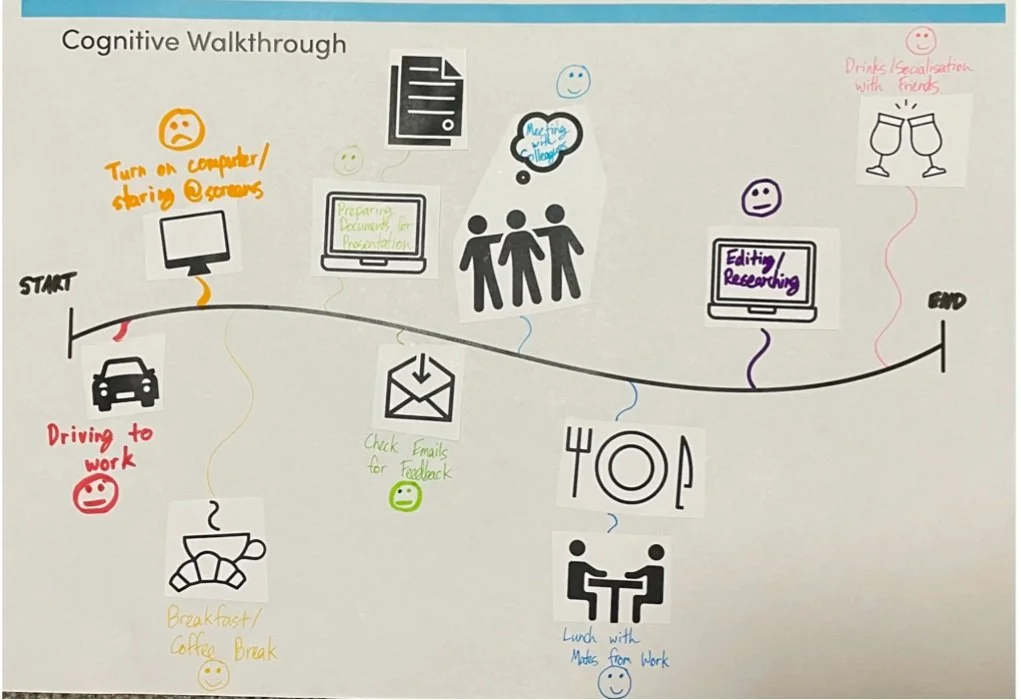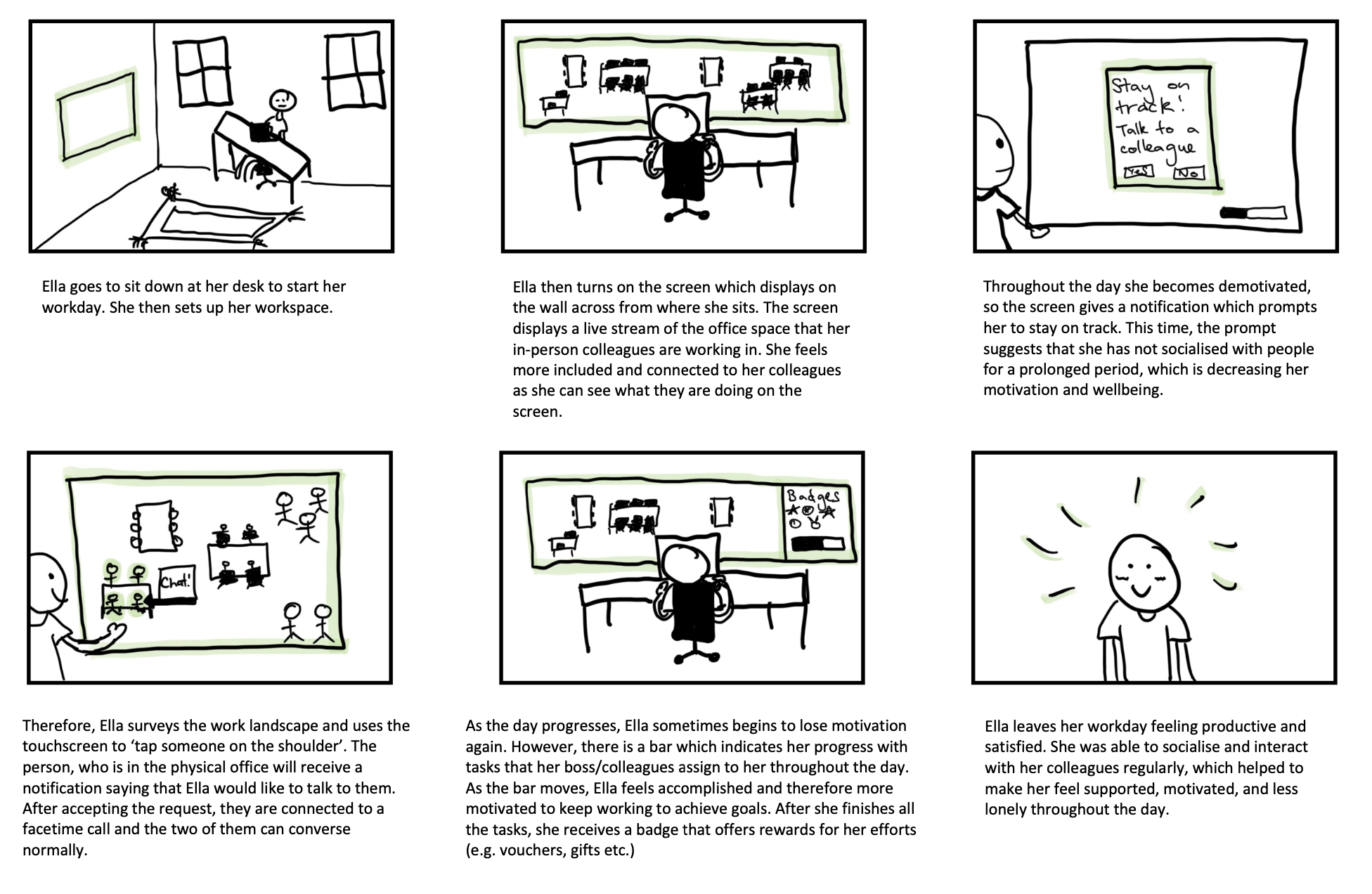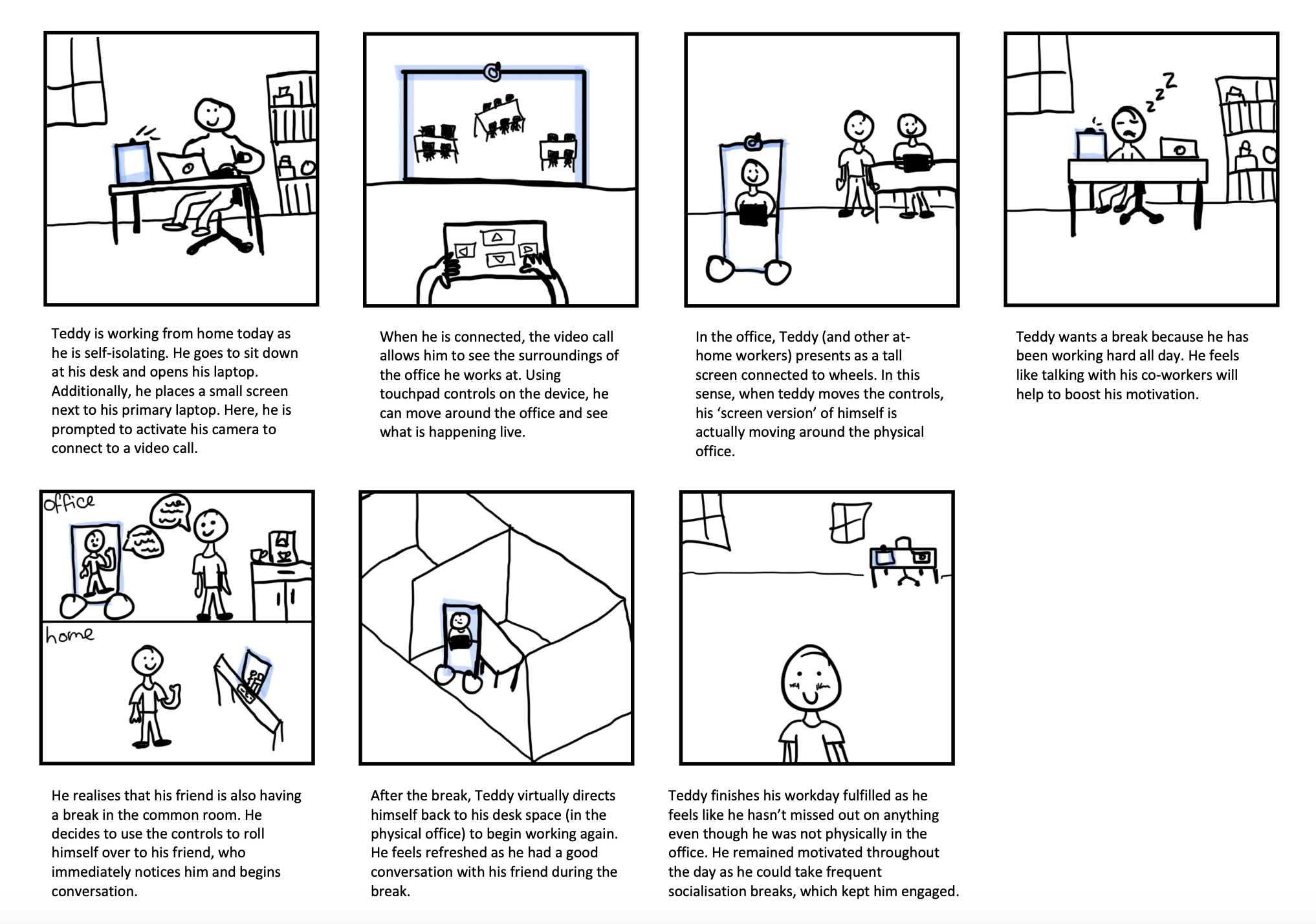Office Connect
Bridging the gap between working from home and in-person workspaces
Summary
Throughout 2020-2022 some people have thrived while working from home while others have been seriously disadvantaged by their circumstances. Our goal was to propose an experience that blurs the gap between working in-person and working from home, to ensure a more motivating and social workspace for all.
As the Design Lead, I led and worked with three other students to conceptualise what the new ‘office’ could look like, moving forward, to ensure an equitable working environment.
Role
Design Lead
Timeline
March - May 2022
Team
Kathleen Sadeli
Gemma Uren
Letizia Phung
Tools
Miro
Adobe Photoshop
Adobe Illustrator
Problem
The Covid-19 pandemic spreads worldwide
Nationwide lockdowns force people to work from home
Lonely and demotivating workspaces
The design brief for this project was The New Workplace:
“Throughout 2020-2022 some people have thrived while working from home, others have been seriously disadvantaged by their circumstances. For some, working from home was no option. What should the new ‘office’ look like, moving forward, to ensure an equitable working environment for everyone? Incorporate an emerging digital technology into the final design, as well as at least one approach from the following: gamification, flow, intrinsic/extrinsic motivation”.
Research
First, we conducted user research to develop empathy with and access user’s tacit knowledge to support design decisions and solutions. Our research methods involved creating sensitising activities and conducting context mapping sessions with nine participants, utilising collage and cognitive walkthrough (map) methods.
For the collage, we used axes labeled with past and present on the x-axis and like and dislike on the y-axis. Since one of our research objectives was to explore workers' positive and negative experiences in a hybrid workspace, the collage served as a useful visual comparison of these experiences. In the second half of the session, we conducted a cognitive walkthrough using a timeline framework. This method helped us gain a deeper understanding of participants' wellbeing and motivation levels throughout their workday.
These context mapping sessions were recorded and transcribed. We then analysed and synthesised the information from the activities and transcripts using statement cards on Miro . We then created a research visualisation poster to summarise these findings.
Redefined Brief
It was discovered that users value a workspace where co-workers collaborate to create a productive and motivating environment, whilst still enjoying the flexibility and freedom that working from home offers. Many users found that their wellbeing, productivity and motivation increased when given the ability to socialise with coworkers.
From here, we narrowed down the brief of the project based off our research findings and created a vision statement to express this new approach: we aim to create a solution that blurs the line between working in-person and working from home, to ensure a more motivating workspace for all.
Design Development
Using this reinvented brief, I then documented two concepts in the form of storyboards. Using a visual decision matrix to justify decision-making, the final design will focus on combining these two ideas to strengthen the solution.
Solution
This approach utilises gamification techniques, through an immersive design, to leverage users’ intrinsic and extrinsic motivation. Particularly, gamification elements, such as the progress bar and task completion levels which overlay the video call, created playful experiences to help make daily work tasks more motivating and engaging. Additionally, immersive design aimed to place the user in the office (without their physical presence), with place and plausibility illusion created through the camera lens of the video call, the sound of the office environment, the ability to respond and talk to co-workers and the ease of moving around the physical workspace. A combination of these elements create a more engaging and immersive user experience.
According to the original design brief, we were required to implement a range of emerging digital technologies in the final design solution. For Office Connect, this involved applying augmented reality and holography into the solution:
The video call participant will appear as a hologram video/image which is projected from a wheeling platform. This will allow the user to appear more present and connected to those working in the office.
Augmented Reality (AR) will be implemented to combine the physical world with the digital world through computer-generated enhancements that overlay an existing three-dimensional space.
Below is a detailed user journey map which illustrates the process that the user undergoes when interacting with Office Connect. It also highlights the pain points that the solution tackles along the way.
Reflection
Throughout this process, I acquired valuable skills in utilising a visual decision matrix to justify design decision-making. While it was challenging to navigate the rejection of certain ideas, especially considering the effort invested and emotional attachment, employing the decision matrix proved instrumental. By systematically comparing ideas against predetermined criteria, we were able to discern the strengths and weaknesses of each design solution, facilitating informed decision-making and ensuring the selection of the most optimal solution.
Future direction involves developing this idea by prototyping the actual interface of the solution. While this project primarily focused on crafting the entire user journey, I am eager to delve deeper into the development of specific touchpoints and conduct user testing to validate and iterate upon these designs. This iterative process will enable us to iteratively refine the user experience and ensure that the final solution effectively meets the needs and preferences of our target users.












